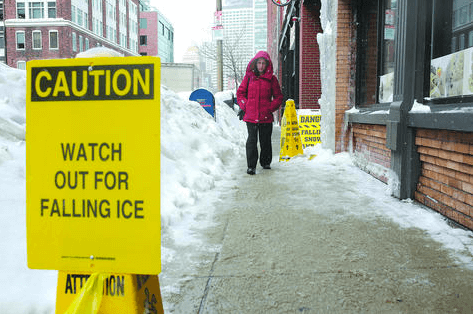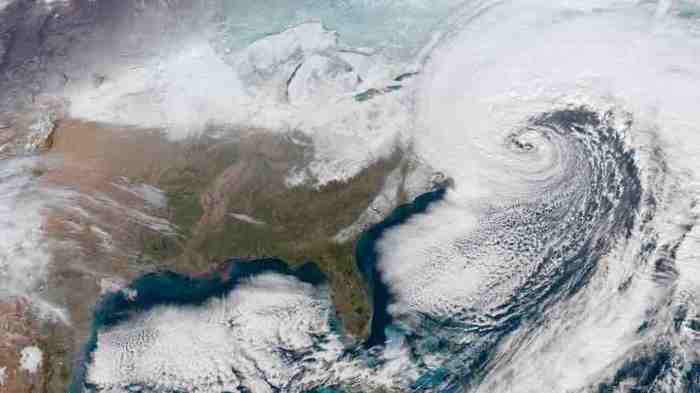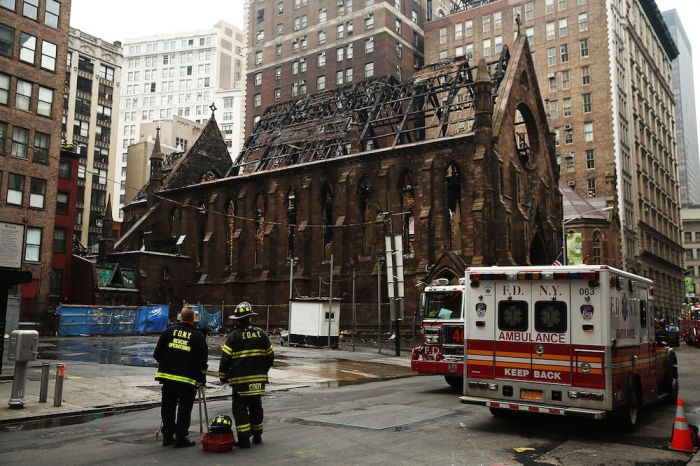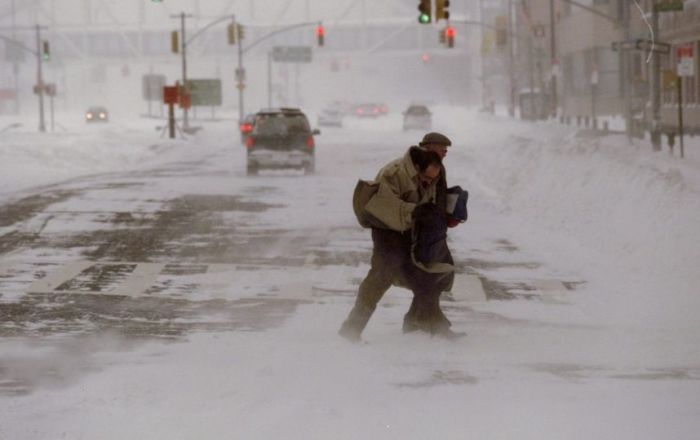Between slick driving conditions, hypothermia, icicles and blood-thirsty snow blowers, it’s clear that every single snowflake falling on Boston the past few weeks seems to want to kills us. And the icing on the already icing sidewalk: Meteorologists are predicting more snow Thursday night.
Lately it feels like trekking down any Boston Street is a death trap, and on Wednesday, Congress Street in Fort Point was no different.
Signs warned of falling ice as dagger sharp icicles dripped and glistened above the heads of wary pedestrians. Workers used caution tape to section off the area under a child-sized icicle that clung to the side of the Boston Children’s Museum. A few blocks south, on Melcher Street, a man feverishly shoveled mounds of heavy snow from the roof of a 7-story building. At one point, a shovel-full landed on the roof of a car, prompting the motorist to stop and put his hazards on. It also prompted several curses from passersby.
In the name of snow safety, Metro reached out to a few experts about the biggest winter threats, and how to protect against them.
“There is danger to that,” saysState Fire Marshal Stephen D. Coan of roof snow removal. “Obviously we don’t recommend that people climb onto roofs unless they are prepared and have the proper equipment.” Every day I’m shoveling
Yes, it’s dangerous to hike through several feet of snow, but removing it can be just as dangerous.
Dr. Huy Nguyen, executive director of the Boston Health Commission warns against overexertion during snow shoveling. “Fortunately we haven’t seen a lot of cases of this, but we certainly do worry about it,” said Nguyen.
To protect against heart strain, Nguyen recommends using a smaller shovel to do the job, taking frequent breaks and staying hydrated. Shovelers should think of the chore as exercise, and stretch and warm up before hitting the driveway, he said. Or better yet, hire the neighbor’s teenage kids. Ten bucks is a lot less than the deductible for an ambulance ride. Don’t space out
Space heaters are a leading cause of fires in the winter, says Coan. Improperly disposed ashes also put homes at risk, as does the overuse of extension cords.
“Space heaters need to be at least three feet away from anything that can burn or catch fire,” asid Coan . “They are meant only for temporary use. People should turn them off when they leave their homes. That is very important. Silent, but deadly
Carbon monoxide poisoning can creep up on frustrated motorists who have dislodged their vehicles from a snow bank. Ice and snow can block the tail pipe, causing the odorless, colorless gas to enter the car and poison its passengers. Using your gas oven to heat the house can also release carbon monoxide, as the burning gas devours the home’s oxygen supply. Nausea, dizziness, fatigue and weakness are symptoms of carbon monoxide poisoning. Open a window and get fresh air immediately. If you think you’ve been poisoned, call 911.
Bundle up
Hypothermia and frostbite are serious concerns for health officials, said Nguyen, who warns for early signs such as numbness, change in skin color on extremities like the ear, nose, fingertips and toes. “Once it hits negative 10 degrees with a wind chill, it takes 30 minutes for frostbite to set in,” said Nguyen. “Once it reaches negative 20 degrees, it’s in the range of ten minutes.”
Protect your noggin’
Traumatic brain injury is an underestimated danger during the snowy season, experts say. Nguyen recommends that all children wear helmets when sledding and ice skating to avoid concussion in the unfortunate event of a fall or crash. “This is the perfect time to go out and enjoy the snow,” said Nguyen. “But concussions and serious brain injuries are real dangers. Thank goodness we have not seen any this year.”
Are you SAD?
Finally, there is Seasonal Affective Disorder. The winter blues are a real thing, and they can cause you to do more than just feel down. They can instigate an all-out snow-fueled rage. “From a practical standpoint I think there are several issues involved when the weather gets terrible like it is [in Boston],” said Dr. Harry Croft, a psychiatrist who’s lucky enough to be based in sunny San Antonio. “The fact that you can’t get out and do the things that you want to do because it may be dangerous to travel, could make people more stressed, angry, irritable, and agitated.” Croft suggests light therapy, as well as medication to combat the phenomenon.
“Most people do better in the sunshine mood-wise than they do in the dark and in the cold,” said Croft, taken aback by Boston’s nearly 7 feet of snow. “My God, that would drive me crazy.”
How Boston can dodge a winter-induced death

NICOLAUS CZARNECKI/METRO


















